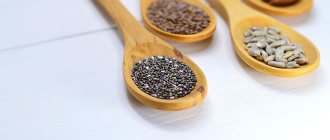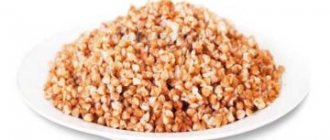After giving birth, all of us, in the hustle and bustle of children's and household chores, think about our appearance and want to quickly get back into our original shape, and some women want to at the same time correct what they were not happy with before. Well, that's right. A woman should look good and be well-groomed. Even in such a difficult time as the postpartum period. When you need to get used to a new, unfamiliar regime and way of life. To the fact that you no longer belong to yourself. And everything depends not on you, but on the new, small, but very powerful member of the family.
The need for exercise for a nursing mother
There are many opinions and debates about whether a nursing mother can play sports or not. The theory about the harmfulness of sports after childbirth is unfounded and erroneous. All available media and printed sources describe and prove the benefits of sports not only after childbirth, but in life in general. An active lifestyle has always kept a person in good shape, giving inner lightness and self-confidence. And for a woman this is especially important. This is especially true when breastfeeding. Let's figure out how to make sports optimal and compatible with caring for the baby, who needs your presence and care.
Breastfeeding is a very useful and mandatory activity, both for the baby and for the mother herself. And the longer you breastfeed, the healthier your baby will be and the more beautifully shaped your breasts will remain. But you need to be distracted by active actions. Many women complain of pain in the neck, spine, lower back, and shoulder blades from unusual carrying of the baby in their arms, rocking and playing. The stroller is also by no means a light bag, and family members cannot always help lift it up or down. All these loads, especially for those who were not ready and not accustomed to such muscle tension, can be very physically difficult if they are not used to it. And even more so morally. Not everything always goes smoothly when a child is growing up. And various incomprehensible questions and problems cause worries and worries. And there is also such a thing as “depression after childbirth.” In general, nerves can be at their limit and a young mother should not allow herself, and subsequently her baby, to get into such a state, who will feel everything that happens to her better than any bearing or radar. Sports activities perfectly solve almost all these problems and troubles.
Many women complain of pain in the neck, spine, lower back, and shoulder blades from unusual carrying of the baby in their arms, rocking and playing. The stroller is also by no means a light bag, and family members cannot always help lift it up or down. All these loads, especially for those who were not ready and not accustomed to such muscle tension, can be very physically difficult if they are not used to it.
Is sports possible during lactation: risks
During pregnancy, the body “stores” energy in the fat layer for future production of breast milk. Ideally, after the end of lactation, the weight should return to normal.
But, if the expectant mother indulged herself with fast carbohydrates, fatty foods and fast food, the figure on the scales will remain plus 10-12 kg after childbirth. Moreover, these excesses cannot be eliminated on their own and require targeted work.
Expert opinion
Sokolova L. S.
Pediatrician of the highest category
Doctors insist on moderate physical activity a week after the birth of the baby (excluding surgical birth, when gymnastics is allowed from 5-6 months). Exercises will strengthen muscle tissue and help restore the elasticity of the ligaments of internal organs weakened by pregnancy.
Research from the University of New Hampshire (Durham, New Hampshire, USA) supports the hypothesis that moderate or even high-intensity exercise during lactation does not interfere with breastfeeding 1 hour after exercise. [1]
The benefits of moderate physical activity
- Increased muscle tone.
- Activation of metabolic processes.
- Development of physical endurance (extremely important for mothers after childbirth).
- Fighting depression (due to the production of endorphins).
A woman will feel the results within a month after the first lesson. Regular exercise improves your performance and mood. A nursing woman who plays sports recovers 2 times faster than a mother who leads a sedentary lifestyle.
A study from the University of California Department of Nutrition found that aerobic exercise performed four or five times a week, beginning six to eight weeks postpartum, had no adverse effect on lactation and significantly improved women's cardiovascular health. [2]
What do you struggle with when playing sports after childbirth?
- With the monotony of housework and baby care. They literally force you to interrupt, to be distracted by something else. A new activity forces you to reconsider your daily routine, and, freeing up time for sports, streamline your other affairs. This, if you like, is the reason to set up your home time management.
- With a changed figure after childbirth. The tightening of all muscles, their elasticity, the changed gait and the appearance of plasticity in movements will definitely be appreciated by those around you and, first of all, by your beloved man.
- Accumulated problems, possible grievances, worries - all of this has a very rational and useful way out, called “sport” in all its manifestations. It’s better to give vent to accumulated emotions on hardware than on loved ones, isn’t it?
- Physical activity has a beneficial effect on the cardiovascular, respiratory, musculoskeletal, and digestive systems. Studies have proven the positive effects of active exercise on breastfeeding women, who demonstrated excellent health and excellent emotional well-being.
Allowed sports
The following sports are considered optimal for a nursing mother:
- fitness. Helps strengthen the body. A general developmental set of exercises allows you to develop strength, endurance, coordination of movements;
- walking. Thanks to daily walks, your mood improves, postpartum depression is eliminated, sleep is normalized, and muscles are strengthened;
swimming. Exercise helps strengthen your back muscles, improve your immunity, and improve your mood. In addition, the blood circulation process is normalized;- Pilates. Helps restore abdominal muscle tone, strengthens the spine, and trains the pelvic muscles. The basis of the training is smooth movements performed using a special technique;
- yoga. Classes help normalize sleep, emotional state, and strengthen the muscles of the chest, spine, and hips.
When can a nursing mother exercise?
In the West, in Europe and the USA, psychologists are inclined to believe that the first three months after pregnancy are equated to its continuation, called the “fourth trimester.” They are not far from the truth in their assumptions. The baby acutely feels the presence of his mother, to which he has become accustomed for nine whole months and is not ready to give it up so quickly. Therefore, you can devote approximately two and a half to three hours to exercise in the first three months after birth, including travel. In this case, be sure to feed the baby before leaving and leave about one hundred and twenty grams of expressed milk for those who will stay with him.
Personal experience
Playing sports while breastfeeding
Tell me, is it possible to play sports while breastfeeding?
Sports during breastfeeding...??
When the baby is four months old, you can extend your absence by two to three hours. And after nine months, leaving the baby without a mother is simply necessary. He must gradually get used to independence and feel his maturation.
All these recommendations can be followed if:
- you have no contraindications from your attending physician for exercising after childbirth;
- you have someone to leave the baby with (and if not, wait until he grows up and start attending classes with a sling);
- if you do not suffer from infectious or viral diseases.
Does exercise affect lactation?
Some young mothers fear that physical activity will interfere with feeding their baby. Repeated studies on this topic prove that sport does not affect the volume of milk produced.
In 2001, an experiment was conducted. It involved 50 overweight breastfeeding women. They were divided into two groups - some followed the principles of proper nutrition and exercise, others did not.
The experiment lasted 2.5 months. Women involved in sports lost an average of 4-5 kilograms. Mommies from another group - only 900 grams. At the same time, both the first and the second produced a sufficient amount of milk.
These studies give a positive answer to the question of whether it is possible to exercise while breastfeeding.
But a woman should monitor how intensively she loses weight. No more than 2-2.5 kilograms per month is acceptable.
Fears about lactic acid
Sometimes not entirely knowledgeable doctors scare women with the fact that during breastfeeding, exercise affects the quality of milk, increasing the level of lactic acid in the body. Indeed, it is so. Lactic acid, of course, is released; this is a normal physiological process during sports. But it does not affect the quality of milk in any way. But that “bitterness” that some nursing mothers note, and the baby’s refusal of milk after classes can happen if your attendance at the gym is more than three times a week, and they are held in “increased intensity” mode.
A nursing mother can play sports, starting with light loads under the careful supervision of an instructor. Feed your baby before leaving, eat properly and balanced, maintain personal hygiene and everything will be fine. Please note that during exercise there should be no stress on the chest muscles while you are feeding the baby. You will do this when you stop breastfeeding completely. If, of course, you decide that in your case it is necessary.
You can do active physical exercises without leaving home. This can be done not only in the gym or training class. Walking, with a stroller, or even better with a kangaroo or sling will be an excellent alternative, especially in the fresh air. You can also find a set of exercises for yourself that you can do at home, both by yourself and with your baby. Be healthy and beautiful!
When to start: first exercises for breastfeeding
If you perform a course of exercises 2-3 times a week, then by the baby’s first birthday, a woman will have a slender silhouette without a saggy belly, and elastic forms. In the first month after birth, minimal loads are expected: 2-3 breathing exercises, stretching, bending. Gradually the load increases, and by 8 weeks the training intensifies to the point of sweating on a T-shirt.
For mothers after a cesarean section and with ruptures sustained during childbirth, the start of classes is delayed for 4-6 months until the uterus stops bleeding. Reducing this period threatens the occurrence of bleeding and prolongation of rehabilitation for another 4-5 months.
Simple gymnastics in the first month after the birth of a child will not bring harm to a nursing mother. Recommended exercises - rotation and tilting of the head, raising the arms, rotating the shoulder and elbow joints, stepping in place - are performed from the first day. Exercises to strengthen muscles are allowed only under certain conditions.
Conditions for starting intensive classes
- Stopping lochia.
- Blood pressure 110-120/70-80 mmHg. Art.
- Body temperature is normal.
- The stitches are dry and painless.
- There is no pain in the lower abdomen.
- 6 months have passed since the operations.
- 60 days have passed since the birth.
Lactation does not interfere with physical activity. Exercises are performed between feedings, preferably after 30-40 minutes. Classes from 9 to 12 am are easier to bear than after lunch. According to statistics, evening workouts in 30% of cases are postponed to the next day due to overwork.
When can you start having sex after childbirth?
In the first 6-8 weeks after childbirth, gynecologists do not recommend having sex. This is due to the fact that the body is recovering at this time after 9 months of pregnancy. Immediately after the end of the third stage of labor, that is, the birth of the placenta, the early postpartum period begins. It continues for 2 hours. Then comes the late postpartum period. This period lasts 6-8 weeks. During this time, there is a reverse development (involution) of all organs and systems that have undergone changes in connection with pregnancy and childbirth. The exception is the mammary glands, the function of which reaches its peak in the postpartum period.
The most pronounced involutional changes occur in the genital organs, especially in the uterus. The rate of involutional changes is most pronounced in the first 8-12 days. The uterus and cervix are significantly reduced in size. After the birth of the placenta, a large wound surface remains in the uterus, which takes approximately 4-6 weeks to heal. During this period, the placental area in the uterus bleeds, spotting - lochia - is bloody in nature in the first days, gradually its color changes from red to reddish-brown, brownish, by the 4th week the discharge almost stops and soon disappears completely. Sexual contact at this time can facilitate the penetration of infection through the slightly open cervix into the uterus; blood and an open wound surface will only contribute to the rapid progression of inflammation.
After vaginal birth, complications can often occur in the form of incisions or tears in the perineum, vaginal walls or cervix. It also takes time for stitches to heal after childbirth. Even if there were no ruptures during childbirth, the tone of the muscles of the vagina and perineum after natural childbirth is significantly reduced. The process of reverse development of the vaginal muscles depends on the tone of these muscles before pregnancy, on whether the woman trained them during pregnancy, on age, and genetic characteristics.
In patients who have undergone a planned cesarean section, there are no changes in the vaginal walls, but restoration of the size of the uterus occurs more slowly. In addition, it takes time for healing and the formation of a full-fledged scar on the anterior abdominal wall. This takes about a month on average.
So, 6-8 weeks after birth, it is advisable to visit a gynecologist , who will examine the condition of the uterus, cervix, sutures on the perineum or vaginal walls, a scar on the abdominal wall after a cesarean section, take a smear on the flora to identify signs of inflammation, and then give the go-ahead for resumption intimate relationships.
A simple set of exercises that promote rapid recovery
Exercising will help you recover faster and restore muscle tone.
Performing the following exercises will not have a negative effect on lactation:
- Lie on the floor, bend your knees. Raise your upper body, pressing your lower back to the floor. Place your hands behind your head. Descend gradually.
- Lie on the mat with your legs straight. Raise them 45 degrees, stay in this position for a while, and then return to the starting position.
Place your hands on the bed, face down. Feet are on the floor. Perform push-ups, making sure to keep your spine straight. Relax your chest muscles. The muscle tissue of the arms is strengthened.- Get on all fours on the floor. Alternately move your legs up and back. Movements are smooth. Hold the raised leg in the air for several minutes.
- Lie on your side. The support is the elbow. Bring your legs together and rise up. Make circular movements. Perform similar actions on the other side.
- Lying on your back, extend your arms along your body, bend your legs. Raise your pelvis as high as possible. Stay like this for a while. Don't raise your shoulders.











